Present:
2. Apologies

The minutes of the 39th AGM, as printed in November 2018 Issue of AV
There were no matters arising.





Chairman’s Report is included later in this issue of AV News).



 Allen, Jill Bunting, John Smith, Jenny Baker, Christine Chittock.
Allen, Jill Bunting, John Smith, Jenny Baker, Christine Chittock.



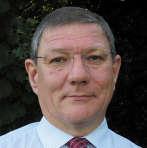


Page 1 | AV News 218 | November 2019
Issue 2 Chairman’s Chatter Edgar Gibbs 4 Editor’s Welcome Alastair Taylor 5 RPS AV Group AGM 8 Chairman's Annual Report Howard Bagshaw 10 RPS Yorkshire AV Day Bryan Stubbs 11 RPS AV Group Ireland Mark Allen 12 NAVC 2019 News Alastair Taylor 13 NAVC 2019 Results 14 Judging the NAVC Keith Leedham 16 NAVC Winners 18 NAVC Highly Commended 19 View from across the pond Mark Allan 22 Dobson Henry Citations 26 CEMRIAC AV Competition 28 PAGB Distinctions Advice Ian Bateman 29 The Letters Page Howard Bagshaw 30 Tribute to Geoff Holmes 32 Ladybrand 2019 Jeff Morris 34 Thanks a LUT Mark Allen 36 Hints and Tips Malcolm Imhoff 38 Music and the Narrative AV Peter Young 42 Masterclass Sound for AV Malcolm Imhoff 52 RPS AV Group Contacts 46 Advanced Image Processing Keith Scott 52 Future Events Subscriptions are open to all at £22 per year including postage. Please contact: David Neal, AV Group Treasurer 16 Fern Road, St Leonards-on-Sea, East Sussex. TN38 0UH 01424 712394 david-neal@talktalk.net
Chairman Edgar Gibbs Secretary Alan Tyrer Editor AV News Alastair Taylor ARPS, CPAGB magazine @avnews.org.uk Design Consultant Andrew N Gagg FRPS
In This
AV Group
Chairman's Chatter
Edgar Gibbs FRPS, MPAGB, AV-AFIAP


Welcome to my �rst Chairman’s Chatter. Firstly I’d like to thank Howard Bagshaw for everything he has done during his tenure as Chair. I am really pleased he will be remaining on the AV Group Committee. Also, thank you to David Neal for being a good guardian of the 3 AV Group accounts (the RPS AV Group accounts, the RPS National AV Championship accounts and the RPS International AV Festival accounts). As Director of the IAVF his help to me in bringing the Festival’s �nances into the 21st century, especially with the introduction of PayPal, was very much appreciated.
I would also like to welcome two new members to the Committee. They are Keith Watson, who has agreed to be our new Treasurer and to “Misty” Martin Addison. Alan Tyrer has agreed to continue with his sterling work as Secretary and I am also pleased to report that Alastair Taylor has taken on the role of Vice Chair. Alastair, who I’m delighted to say continues as our AV News Editor, reminded me on the Sunday of the National Audio Visual Championship weekend that I must get on with my Chairman’s Chatter as the copy date was close. This leads me nicely on to the recent Championship which was organised and executed so slickly by Howard and his team.
It was good to see a high quality entry of 74 AVs that certainly made the judges work hard. Leeds Trinity University is a great venue with superb sound and projection. Anyone in the audience who saw their AV being projected could not fail to appreciate how the sound and audio system enhanced their production. Congratulations to everybody who entered and particularly those who won awards.
We, the AV Group, both the Committee and Members have challenges for the coming year and the future. These include getting and encouraging new members and promoting and supporting applications for distinctions. Unfortunately, the recent Multimedia Assessment Day scheduled for 4 November had to be cancelled due to a lack of applications.
Page 2 | AV News 218 | November 2019
As Howard said in his previous report, don’t let it be a case of use it or lose it. The Committee is there to help, so please ask and if we don’t have the answer we will probably know someone who does. Also, any suggestions you have would be gratefully received.
Not only will I be your Chair for the next twelve months, but I have agreed to be the Director of the 2020 RPS International AV Festival. A provisional booking has been made for 26 and 27 September 2020. It will be held in Cheltenham again at the same venue which proved so popular in 2016 and 2018, namely the 1914 Centenary Hall, Dean Close Preparatory School, Lansdown Road, Cheltenham, Gloucestershire, GL51 6QS. A formal announcement will be made when the booking with the school has been con�rmed.

May I take this opportunity to wish you and yours best wishes for Christmas and the New Year. Finally, thanks to Igor we now have a new version of PTE, which could of course provide the perfect Christmas present!
The RPS AV Group Makes History
Well at least we think we did!
With the change of RPS patron to HRH The Duchess of Cambridge, some new ribbons had to be produced. We believe that the RPS National AV Competition was the �rst occasions when these new ribbons were awarded and who better than Judith Kimber to be the very �rst recipient. Congratulations to Judith.
Page 3 | AV News 218 | November 2019
Editor’s Welcome
Alastair Taylor ARPS CPAGB/AV

Welcome to AV News 218. This has turned out to be another bumper edition, particularly with various reports and images from the excellent National AV Championships.
I am also pleased to have some new contributors for the technical sections of the journal. Welcome to Mark Allen who tells us about Look Up Tables in the ON1 RAW editing programme and how a consistent colour cast adds to the mood of the AV (and he should know as the 2019 NAVC champion). I would also like to welcome Peter Young as a new contributor. His interesting article on Music and Narrative AV is insightful and helpful. It can only help us all to raise our game. Thanks as always to the usual contributors and if you feel moved to write a few words; well you know where I am!
There was some helpful discussion about AV News at the RPS AV Group AGM. One particular point was the importance of the journal as a long term record of our work with a request to make sure we present a full listing of competition results rather than pointing readers towards a webpage. In this edition I have done this for the NAVC and the Jessops Rose Bowl competition (which took place on the same day). I hope you view this as an improvement.
One particular challenge with AV News is the cost of producing it and in particular the Royal Mail distribution. We could of course increase AV Group subscription fees but I think we would all agree that we should avoid that if possible. Another suggestion has been to distribute the journal via electronic means although I do believe physical print form has much more impact. Another idea has been around a move from the A5 format to a “thinner” A4 but that idea was met with some negativity. So what do we do?
Discussions within the AV Group Committee are underway with one idea being to move to three editions per year with more pages per edition. In effect, subscribers would get the same number of pages but every four months rather than every quarter. The postage costs of a thicker edition are much the same so the net effect would be to reduce postage costs by around a quarter. This would also allow the editor to better match publication dates to the AV calendar. Over to you! Perhaps the next edition of AV News will consist of only letters to the editor ...
Contact the editor at: magazine@avnews.org.uk
Page 4 | AV News 218 | November 2019
Minutes of the 40th Annual General Meeting
Held at Leeds Trinity University
Saturday 5 th October 2019 at 6 pm during the RPS National AV Championships
Present:
Howard Bagshaw (Chairman), Edgar Gibbs (Vice Chairman), David Neal (Treasurer), Alan Tyrer (Secretary) Andrew Gagg (Committee Member), Alastair Taylor (AV News Editor), Peter Warner (Committee member).
Richard Brown, Malcolm Imhoff, Bryan Stubbs, Keith Leedham, Sheila Haycox, John Perriam, Mo Martin, Derrick Holliday, Chris Bate, Naomi Saul, Jose Currant, Keith Watson .
In Attendance:
Linda Gibbs, Carole Bagshaw, Bev Tyrer, Christine Gagg, Gillian Neal, Mark Allen, Jill Bunting, John Smith, Jenny Baker, Christine Chittock.
1. Welcome
Howard Bagshaw welcomed all those present to the AGM of the RPS AV Group.
2. Apologies
Apologies for absence were received from: Lilian Webb, Malcolm and Jenny Gee.
3. Minutes of the Previous Annual General Meeting
The minutes of the 39th AGM, as printed in November 2018 Issue of AV News, were received. It was proposed by Malcolm Imhoff and seconded by Chris Bate that these be accepted as a true record. This was agreed unanimously.
4. Matters Arising
There were no matters arising.
5. Of�cers Reports

5.1 Chairman's Report
Howard Bagshaw gave a brief presentation of his report. (A copy of the Chairman’s Report is included later in this issue of AV News).
Page 5 | AV News 218 | November 2019
Minutes of the 40 th Annual General Meeting continued ...
5.2 Treasurer ’ s Report
David Neal presented his report. It had been a satisfactory year and he outlined the position of the three accounts (AV Group, Nationals and Internationals).
He expected a small de�cit of the AV Group by year end.
The 2018 International had been a successful event with a small de�cit. He expected a small de�cit in the Nationals which we were in the middle of.
David continues to send quarterly accounts to RPS in Bristol. He also acts as Membership Secretary being involved with the administration of non RPS subscribers to AV News.
Details of the reports are available to RPS members on request. David was thanked for his work.
5.3 AV News
Alastair Taylor said that he was very enthusiastic about producing the best magazine possible and was grateful for the design contribution from Andrew Gagg and for the regular contributions of articles by a small group of members. He was also grateful to the several people who had offered to proof read it.
He outlined the dif�culties of the size of the magazine and the postage costs incurred. He said that discussions were continuing with the idea that there could be three issues annually of a larger magazine with the possibility of more information being available in electronic format. It would be a contentious issue.
There was some discussion about the magazine content and it was important to �nd out what members wanted.
5.4 RPS International AV Festival 2020.
Edgar Gibbs said that he hoped to hold the event again next year at the same Cheltenham venue and the date would be advised in due course. He particularly thanked David Neal for handling the payments last year.
6. Election of Of�cers and Committee Members
Howard Bagshaw was standing down as Chair at this meeting and David Neal was standing down as Treasurer.
Page 6 | AV News 218 | November 2019
The following Committee Members had been proposed.
6.1. Chair: Edgar Gibbs
6.2. Vice Chair: Alastair Taylor
6.3. Secretary: Alan Tyrer
6.4. Treasurer: Keith Watson
6.5 Other Committee Members: Howard Bagshaw, Andrew Gagg, Peter Warner, Martin Addison.

It was proposed by Richard Brown and seconded by Malcolm Imhoff that the nominees be elected en bloc. This was agreed unanimously.
7. Proposals.
No proposals had been received.
8. Any Other Business
The new Group chair, Edgar Gibbs, thanked Howard for his long service to the AV Group and was pleased that he would be continuing on the Committee where his advice would be valuable.
9. Next Meeting
The next AGM will be held at The International AV Festival which, it is hoped, will be held in Cheltenham in September 2020. The date will be noti�ed.


10. Close.
The meeting closed at 6.40pm.
Chairman's Annual Report
Howard Bagshaw ARPS, MPAGB
The Group affairs are managed, as you know by the Committee, who were voted in by members at the last AGM and who act in unpaid roles to ensure that the wishes of the Group are best met.
The number of Group members has declined slightly to around 177, a number which makes the Group viable, but stretches our budgets to the limit, as costs increase and the number of members actively participating in events like these Nationals tends to decrease. These Nationals, for example have seen around 15 less people attending each day compared with the last event, not a signi�cant number, but bringing in around £500 less income.
Activities have continued and, after the very successful Internationals last year, we will hopefully have a very successful Nationals event here in Leeds. This venue proved popular, welcoming and accessible two years ago, so the NAVC team have again pulled out all the stops to produce an exciting event. Of course, success is also hugely down to the support of Group members and others in the UK AV community who have entered their best work and those who have attended to be part of the weekend.
There are less regional group activities, though our three stalwart groups, in South Wales, Northern Ireland and Yorkshire, continue to hold fruitful and enjoyable meetings. I would like to thank Raymond Hughes, who has chaired the RPS AV Group (Ireland) for the past 10 years, for his efforts and dedication, but now ‘retired’. Mark Allen is taking over the Chairing of the Group and we wish him every success. But, I would like to thank the organising committees of all of the groups for all the work and effort they have put in.
AV News is considered, by many, to be one of the key bene�ts of belonging to the Group. The Editorship is now �rmly in the hands of Alastair Taylor and we have seen some change in content and design style, with a lot of advice from Andrew Gagg, which seems to have been well received by members. I am delighted that the letters pages seem to grow, it is always good to hear the views of our members. Can I thank the contributors who have made the magazine possible and encourage all of you to contribute and particularly to write and respond to issues in AV News.
Another key communication channel with members ought to be the RPS website. I would particularly like to thank Alan Tyrer for the work he has continued to do this year in maintaining and improving the site.

Page 8 | AV News 218 | November 2019
Unfortunately, and as I said a year ago, the underlying structure of the site (over which we have no control), makes accessing and �nding information particularly problematic. The Society has taken as one of its key tasks to improve this site and we are seeing the �rst signs of this, but we still need a more 'user friendly' way of �nding things.
RPS Distinctions continue to be available in 'Multimedia' where good Audio Visual work is capable of being recognised to the highest levels. I would like to heartily congratulate those who have received distinctions in the past year. Unfortunately, the number of members, or even non-members of the RPS, who are applying for distinctions in multimedia is very small and currently barely viable. Unless there is a sudden rush of interest, I doubt whether the awards panel will be able to meet in a month’s time.
The distinctions have gone through much upheaval in recent years, but despite these changes, good AV work is recognised and rewarded. I would like to encourage members to think about going for a distinction, or going for the next level up, to recognise the worth of our hobby. If you have already reached the pinnacle, by gaining a Fellowship, could I encourage you to look around and to support and encourage friends and colleagues in your group or club, to think about distinctions.
I think that the caution ought to be, for both RPS and PAGB distinctions, “ use them, or loose them ”.

I think we will see, over the next few years, a change in the nature of the RPS, our parent body. The in�uence of the Charity Commission is changing the direction and purpose of the Society. In a recent editorial in the Journal, the President said that “The RPS charity is not […] to operate for the bene�t of its members. Our goal is higher and more ambitious.”. And in the latest Journal, the new President proclaims that “We must restore the Society to that of being the pre-eminent learned organisation for photography and use that position to clearly deliver our charitable objectives.”.
For those who are interested, “The objects of The Society are to educate members of the public by increasing their knowledge and understanding of Photography and in doing so, to promote the highest standards of achievement in Photography in order to encourage public appreciation of Photography.” Mention is not made of any bene�t to paying members, nor of the unstinting contribution of the multitude of volunteers who run most of the activities of the Society.
However, I suspect and hope that this change in focus, may have little effect on the AV world, other than perhaps a continuing decline in membership of the RPS Group.
Page 9 | AV News 218 | November 2019
Chairman's Annual Report continued ...
Finally, I would particularly like to thank all the Committee Members and also to the members of the NAVC Organising Committee for their hard work over the year. But I would also like to ask members who aren't currently involved, to consider joining the committee.
You will be aware that I am standing down as Chair this year, as is David Neal as Treasurer. I would particularly like to thank David for his outstanding work as Treasurer. He has brought together the three distinct accounts which this Group manage and managed to not only balance the books, but present the information to us all in a manner that we can understand. Thank you David. And, can I add my thanks to all the members for their support, in my time as Chair of the Group.
Great Yorkshire AV Day

Sunday 17 November 2019
Leeds Trinity University
10:30 Bring along your AV Sequences for Constructive Criticism
14:00 Alastair Taylor ARPS CPAGB/AV
Alastair will present his talk “A Personal Journey in AV” and explain how he puts emotion and feeling into his work. It is a broad body of work which includes photo harmony, documentary and even a little humour.

For more information and to book your place contact Bryan Stubbs
Telephone: 0113 2661 448 Email: bryan@stubbsav.com



Page 10 | AV News 218 | November 2019
RPS AV Group (Ireland)
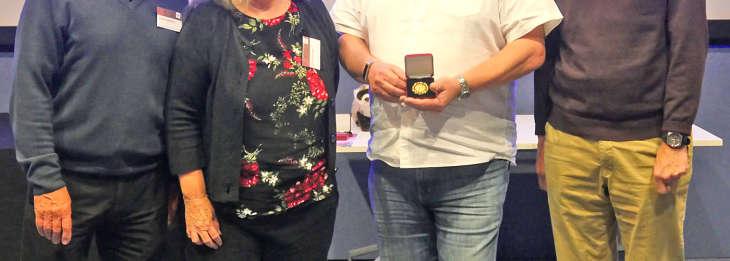
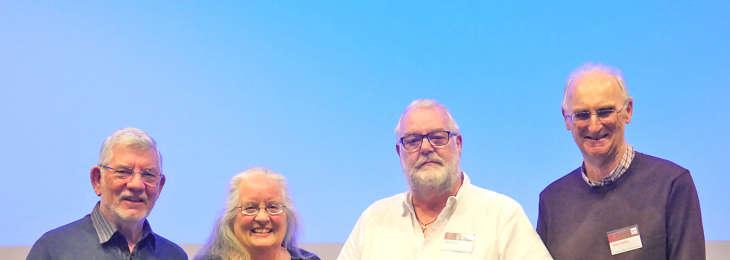
 Mark Allan DPAGB/AV
Mark Allan DPAGB/AV
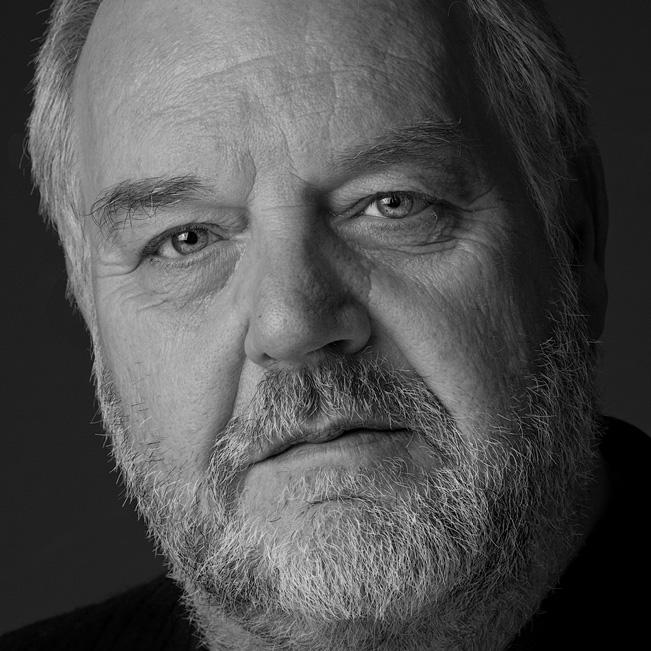
The RPS AV Group (Ireland) held its �rst meeting under the Chair of Mark Allen who has taken over from Raymond Hughes who held the Chair for many years. Members had been asked to prepare a 321 style sequence over the summer months and ten shows were viewed before lunch. There was much discussion on the approaches needed to get your story across in just 3 minutes 21 seconds. The afternoon was spent watching the top 15 sequences from the 2019 International 321 Challenge and the top 10 from the 2018 Challenge.
Mark Allen admitted he takes a simple approach to 321. He admits he takes a sequence that has a proven track record at national competition level and 'just shortens it'. However, if you have tried this, you will know that it is not as easy as it sounds. Again, this generated some debate. Some folks thought the 321 was an unnecessary constriction of creativity, others enjoyed the challenge. Indeed, some enjoyed the challenge of getting it exactly 201 seconds, despite the fact that this is not a requirement.
Mark Allen is crowned as RPS NAVC 2019 Champion
NAVC 2019 News
A Special Report for AV News
Alastair Taylor ARPS CPAGB/AV
Awonderful weekend in a fantastic venue with a great group of people. What's not to like about that? Well there is always the incredible projection and unbelievable sound systems in the Leeds Trinity University Lecture Theatre and that’s before we even consider the festival of 74 top quality AV productions.
This years NAVC entry was as strong as ever with the usual range of documentary style, photo harmony, travel, and thought provoking productions. With a breadth of locations, this year’s NAVC was, as usual, a romp around the world. As my wife said, “who needs to go to all these places when you can go to an AV festival and sample the place before you book the trip?” In our household, trips to Coventry Cathedral and Droitwich (yes!, the one in Worcestershire) are now on the cards.
The Jury of three, Keith Leedham FRPS EFIAP FIPF from Essex, Jill Bunting CPAGB/AV LACI from North Wales and local boy, Bryan Stubbs ARPS had a great challenge on their hands. They worked ef�ciently and (according to the Chair of the Jury) were in full agreement on the results.
Although the number of people attending the festival was down a little on previous years, there were several new visitors at the NAVC. New friends were made and it was good to see a number of new entrants.
In this report …
The full results listing for NAVC 2019

Thoughts from Keith Leedham, the Chair of the Judging panel
Images form the First, Second and Third placed winning productions
Images from the Commended and Highly Commended AV productions
Re�ections the NAVC winner and �rst - time attendee, Mark Allen.
Page 12 | AV News 218 | November 2019
The results of the RPS National AV Championships

1st - RPS Gold Mark Allen DPAGB/AV The End Of All Our Exploring
2nd - RPS Silver Raymond Bridges LRPS CPAGB Annabel Lee
3rd - RPS Bronze Andrew N Gagg FRPS Dendrochronology
Photo Harmony - RPS
Gold Martin Addison FRPS
Misty
Pollock medal Mark Allen DPAGB/AV The End Of All Our Exploring
Highly commended Malcolm Imhoff FRPS FACI(M) Walking with Grief
Highly commended Ian Bateman FRPS MPAGB
Highly commended Richard Brown FRPS
The Gallery
It all Adds Up
Commended Judith Kimber LIPF DPAGB/AV Safe
Commended Marion Waine John Rowell
AV-AFIAP Tryfan Skylight
Commended Martin Fry FRPS AV-EFIAP Winter's Gift
Judge's Mention (Bryan) Keith Storey
AV-AFIAP Life at Twenty Degrees
Judge's Mention (Jill) Lisa Buckalders LRPS CPAGB Visions of Africa
Judge's Mention (Keith) John Holt ARPS DPAGB It Stood
Audience award Brenda Stone
Mrs Heelis
Audience session 1 Mark Allen DPAGB/AV The End Of All Our Exploring
Audience session 2 Judith Kimber LIPF DPAGB/AV Safe
Audience session 3 Ray Dowding FRPS
Fire and Ice
Audience session 4 Graham Sergeant FRPS A Memorable Ten Years
Audience session 5 Ian Bateman FRPS MPAGB The Gallery
Audience session 6 Brenda Stone
Audience session 7 Jenny Stone LRPS
Mrs Heelis
Will you speak for me
Page 13 | AV News 218 | November 2019
Judging the NAVC: a personal view
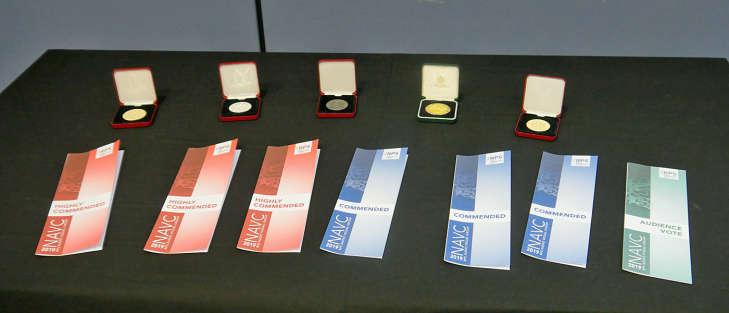 Keith Leedham FRPS EFIAP FIPF
Keith Leedham FRPS EFIAP FIPF
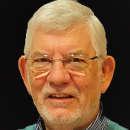
Iregard the RPS National AV Championship and The RPS International AV Festival to be the most prestige events in this country. That is not to say the other AV Competitions are not, but the two of them are the oldest and the ones that most people want to win. So to be asked to judge them is an honour.
The �rst question you ask is “who are my fellow judges?” Although I know Jill Bunting and Bryan Stubbs very well, I have never judged with either of them. After seeing the �rst session I was about to �nd out if we were on the same wavelength. We had all written some remarks and a score, ABC + or -. I let Jill and Bryan give their thoughts �rst then I had my say. I must say there was a moment of relief when I realised that we were in fact on the same wavelength.
After listening to each other I wrote down all three marks so we could easily see where the sequence stood. We did this for every sequence and spent as much time for each one as we needed. As we went on it soon became clear what sequences were rising to the top. After the �rst day I started a list of the best scoring ones and kept adding to it as we went through Sunday. In this way we were trying to reduce the time it would take to come to our �nal decision. When we had seen them all we went through all the sequences that were not on our list to make sure we hadn’t missed anything. Then we decided on 1st 2nd and 3rd. The rest were a lot easier to decide on.
Page 14 | AV News 218 | November 2019
Considering there was no preselection I thought that all the sequences were of a good standard. Everything was represented from documentary through to song interpretation with many new ideas. I must say there was some breath -taking photography from Martin Fry, Ian Bateman and many others. Some lovely stories from people like Judith Kimber, Andrew Gagg and so on. Some very interesting documentaries from Chris Bate, Keith Storey, Richard Brown and many others.

It always surprises me how the same sequence can look and affect you very differently according to the hall, the audience, the sound, the screen and the mood you are in yourself. Although being a judge stops you from entering yourself, I always learn more than I do if I am just sitting in the audience. This year I was inspired by one particular sequence that I don’t want to copy but I can adapt the idea for my needs. If anybody reading this has never been to a big AV competition, then I urge you to go to one because you always come away inspired.

Page 15 | AV News 218 | November 2019
The Judges: Jill Bunting CPABG/AV LACI, Keith Leedham FRPS EFIAP FIPF and Bryan Stubbs ARPS (Photographs courtesy John Smith)







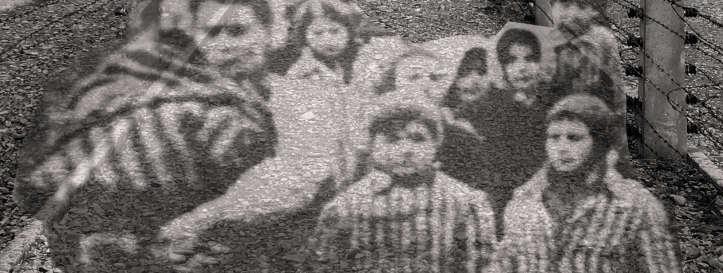

Winning Images from RPS NAVC 2019



First Place and RPS Gold: The End of All our Exploring by Mark Allen (Left)

Second Place and RPS Silver: Annabel Lee by Raymond Bridges (Above)

Third Place and RPS Bronze: Dendrochronology by Andrew Gagg (Below)




NAVC 2019
Highly Commended
The Gallery by Ian Bateman
It All Adds Up by Richard Brown
Walking With Grief by Malcolm Imhoff


View From Across the Pond
Mark Allen DPAGB/AV

Iwas stopping at my daughter's in Manchester, enjoying giving her a hand with my three granddaughters. While quite delightful, it is also rather draining and I cried off for two days to attend the Festival at Leeds. I arrived early hoping to offer Howard a hand if he needed it. Of course, all was well, so I used my time to get acquainted with my new friends from the RPS. Having only recently taken over the RPS AV Group (Ireland) I was keen to put faces to the names.
Although it was my �rst visit to the RPS NAVC, I was welcomed like an old friend and indeed I found that the AV community at the Festival went out of their way to make me most welcome. It was also a useful time to meet up with folks I had met at the recent PAGB advisory and Awards For Photographic Merit days at Wilmslow.
Suitably refreshed with tea we all ventured into the auditorium. Seats were selected and we soon entered Session 1. I had hoped to record the judges comments on each show, only to be informed by Howard (some days before) that was not how things were done at the NAVC. With 41 sequences on the �rst day, spread over 4 sessions and 33 over 3 sessions the following daythere simply is no time for comment. Out of the 74 there were 6 sequences from Northern Ireland and I had told folk back home I would take copious notes. Instead, I had to adopt a scoring system, which I just made up, based on what I thought was an acceptable standard.
Page 19 | AV News 218 | November 2019
day progressed. Over the lunchbreak, Edgar Gibbs mentioned the ABC education, or a delight, or a surprise, or a good story. That is the magic of a



if Ian could prepare a number of different conversations for each gallery


NAVC 2019 Commended



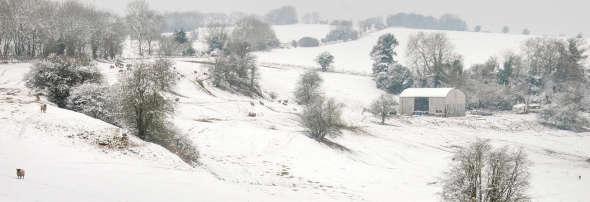






 Tryfan Skylight by Marion Waine and John Rowell
Winter ‘s Gift by Martin Fry
Safe by Judith Kimber
Tryfan Skylight by Marion Waine and John Rowell
Winter ‘s Gift by Martin Fry
Safe by Judith Kimber
Dobson Henry Awards 2019 Awarded by the RPS AV Group


The following citation for the Dobson Henry Award 2019 was read by Howard Bagshaw at the National AV Championships held at Leeds Trinity University on the weekend of 5/6 October 2019.
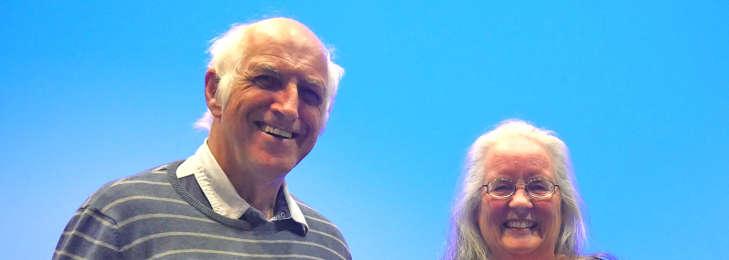
This year the RPS AV Group are delighted to be able to present two renowned UK workers with the “Dobson Henry Medal”, an award presented for outstanding contributions in the Audio-Visual Medium, for furthering the activity and for long service to the medium.
Normally we would present two, independent citations, but in this case the contribution of the recipients has been very much as a two-person team. That’s not to say that they don’t have their individual strengths, but for so many years they have worked together and contributed seamlessly.
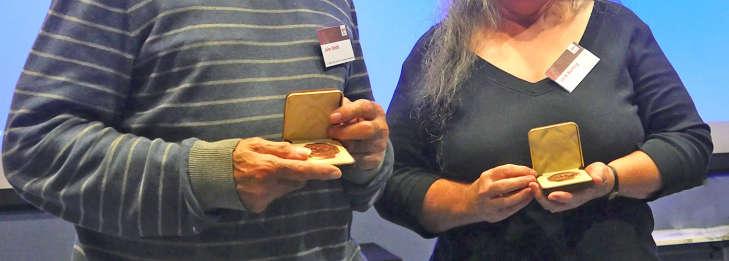
Page 22 | AV News 218 | November 2019
My �rst experience of these ‘Nationals’ was in 2007 and it was there that I �rst saw one of their AVs. As soon as I mention the name of the AV which I saw at that event, many will recognise the recipients of this year’s awards. The AV I saw, which had the audience rolling in the aisles (and that in itself is a clue), went on to win the very �rst ‘Pollock Medal’. It was about a naive Yorkshireman’s visit to the opera, Messiah continues to be one of those AVs you can watch over and over. Fifteen years previously, before my AV time, our other recipient also won the best �rst-time entrant prize with The Dream, but in my ‘era’ made a great impression with those butter�ies in The Colour Thief.
Though they started in the tape/slide era, working in the computer and sound industries made their transition to digital less painful and soon made them the gurus of digital AV and ambassadors and experts in everything PTE. Their knowledge and presentation skills have meant that, over the years they have lectured to innumerable camera clubs and AV groups, particularly in the north of the country. Both have been presidents of their PAGB Federations and continue a close relationship with the PAGB, particularly in the AV awards that body offers.
For the RPS, they became Joint Editors of the AV News magazine for seven years, setting up a web presence which continues to be the ‘go to’ site for checking on events and competitions.

Many of you will be attending the next national competition, the Great Northern Festival, which their team took over from Howard and Suzanne Gregory and for which they will be very much ‘up-front’. Maybe you will be in Wilmslow for the AV Group’s regular meeting, where our recipients will be making sure it all works, especially from the technical side. Or perhaps you will travel to Capel Curig to enjoy the IAC Peter Coles competition where they will undoubtedly be providing all the technical support. And following that competition, I suspect as has happened in recent years, they will be taking the winners to the BIAFF festival to show our video and �lm colleagues, the best of the world’s AVs.
Both of them are now straying into the dark arts of video and gaining awards from the IAC in this medium and both have judged at the BIAFF festival. She now has gained a licentiateship distinction from the IAC, whose acronym rather inappropriately appears as ‘LACI’.
By now most of you will have realised that the awards this year go to Jill K Bunting CPAGB LACI and John Smith APAGB CPAGB. It gives me great pleasure to make this award on behalf of the RPS AV Group and the whole AV community, and to present each with a Dobson Henry Medal.
Page 23 | AV News 218 | November 2019
Dobson Henry Awards 2019 Awarded by the RPS AV Group

The following citation for the Dobson Henry Award 2019 was read by Edgar Gibbs at the National AV Championships held at Leeds Trinity University on the weekend of 5/6 October 2019.
This special award of the Dobson Henry Medal is presented only on rare occasions. It is awarded for outstanding contributions in the Audio Visual medium, for furthering the activity of the medium, and for long service to the medium.
The person in this citation started photography in his childhood, and has been very active through their college years to date gaining, an LRPS in the 1990s. With the closing of their working career, this person started retirement actively interested in the Audio Visual medium. It quickly became obvious that not only was the person a good single image photographer but had all the skills of an AV producer.
This producer has worked both singly and collaboratively and has not been afraid of tackling sensitive subjects. Their �rst singly produced AV achieved major success at the 2010 RPS International AV Festival by winning the Grand Prix. The AV was notable for technique, production and in particular the script where some of the phrases are still found to be used in conversations of AVers today, “sounds familiar” being one.
This person obtained an ARPS in AV and then the MPAGB in AV. Over the years they have become more and more involved with the RPS. They have also served on both the RPS Multimedia Distinction Panel and the PAGB Awards for Photographic Merit in AV.
A considerable number of the quali�cations required for awarding the Dobson Henry Medal apply to the person concerned. These include organising events, such as the National AV Championship, workshops and AV Days, working on Committees such as the AV Group and the RPS Distinctions Panel. The quali�cations also include helping and advising others, not just in public, but also for those people who work quietly in the background.

Page 24 | AV News 218 | November 2019
Anyone that knows this person can con�rm when it comes to sharing knowledge and helping other people at whatever level the “yes” word is always the answer.
This person has been successful in all levels of competition from local to international events. Over the years they have presented many AV shows, including guest sessions at AV days throughout the country. The person has judged in Australia, South Africa, Italy, plus more, and has given presentations both nationally and internationally.
This person has received outstanding support from their spouse both at home and abroad.
You have probably guessed that the person in question is our outgoing RPS AV Group Chair and organiser of the RPS National AV Championship, Howard Bagshaw, who has always helped and encouraged others in AV, both to groups, or on a one to one basis.

On behalf of the AV Group Committee I would now like to present Howard Bagshaw ARPS MPAGB with the Dobson Henry Medal.

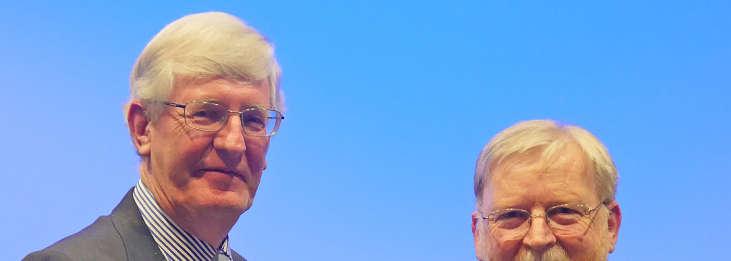
Page 25 | AV News 218 | November 2019
CEMRIAC AV Competition for the ‘Jessops Rose Bowl’
Smethwick Photographic Society ~ Saturday 5th October 2019.
The event was hosted by Worcestershire A.V Group and attracted 18 sequences. The judge was John Holt ARPS, DPAGB, BPE5 who had the daunting task of choosing the winner from a varied and diverse range of sequences. John commented “Every sequence had merit but some had greater merit than others. The choice at the top end was very dif�cult and at least four could have achieved �rst place so inevitably it came down to personal choice.”
First ... GOD’S PAINTBRUSH (Malcolm Imhoff) Image below
Second ... LIFELINE (Malcolm and Jenny Gee) Image right top
Third ... CHAKRA SUTRA (Andrew Gagg) Image right bottom
Highly Commended ... BEYOND THE WALL (Alastair Taylor)


Commended ... THE BRONX (Mike Edwards)

Commended CINDERLOO (Martin James)
Commended ... IT ALL ADDS UP (Richard Brown)
Sound Trophy ... CHAKRA SUTRA (Andrew Gagg)

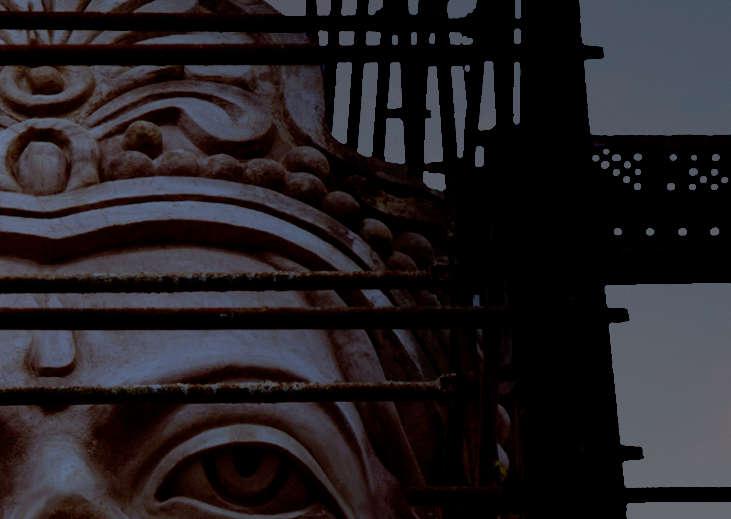
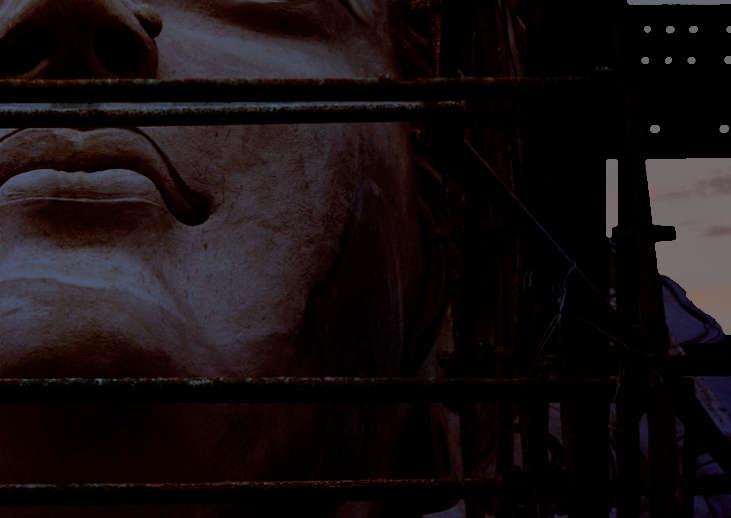




PAGB Distinctions Advice
 Ian Bateman FRPS MPAGB AV-AFIAP APAGB President, Western Counties Photographic Federation
Ian Bateman FRPS MPAGB AV-AFIAP APAGB President, Western Counties Photographic Federation

We are all familiar with the RPS Distinctions in Multimedia, within which the AV category resides. If you are a member of a camera club, you’re also probably familiar with the PAGB Awards Scheme, which also has an AV category.
There are three levels of award, Credit (CPAGB), Distinction (DPAGB) and Master (MPAGB). Each level has a standard that has to be met in terms of photography and AV production, and each level has time limits for the sequences shown. Currently, these are:
CPAGB : 06 - 10 minutes
DPAGB : 10 - 15 minutes
MPAGB : 15 - 25 minutes
The assessments are held annually (given suf�cient interest) and a panel of �ve adjudicators will decide if the application meets the standard required. Successful applicants will be able to display the accreditation letters (CPAGB/ AV, DPAGB/AV or MPAGB/AV) after their name. There is a one-off cost for the application, but no on-going fee afterwards.
In recent years the assessments have been hosted by the Wilmslow Guild AV Group, and Advisory Sessions for anyone thinking of applying have been held as well. There has been a demand for an Advisory Day “down south”, so the WCPF have agreed to hold an event on Saturday 29th February 2020, which will be hosted by Exmouth Photo Group in a venue near Exeter.
The day is almost (but not quite!) fully subscribed for those wanting to show their work, but there are plenty of spaces available for observers to come along and hear what the panel have to say. An actual Assessment Day will then he held later in the year.
Full details can be found on www.ibateman.co.uk/epg
Page 28 | AV News 218 | November 2019
Dear Editor,
It was with great interest that I read the article by Howard Bagshaw (Issue 217) concerning the recent Garda International AV « Festival » an annual FIAP event in Italy. May I be allowed to make a few comments about the article and Italian AV events in general.
Firstly it is Howard himself who has titled « Festival » but for having entered �ve Italian AV events in recent years I can con�rm that the Italians always use the word « concorso » and translate it as « competition » or « contest ». I can also con�rm that although it may be festive for members of the jury, it is far from festive for any authors that may turn up!.
Having had a few feed-backs concerning Italian AV events I took the decision to attend one of their events in Northern Italy. At least it was the opportunity to see my AV on a big screen as the organizers had assured me that all entries would be projected. Also I feel it is important to see how authors in other countries use our medium to express themselves.
On turning up at this event, I was rather surprised to discover that of the 64 authors who had sent entries, I was the only one actually present! The organizers also seemed quite surprised that I had made the 2700 km round trip ; however I should add that there were about 60 chairs available to view the screening just in case. The screening was well organized and there was little delay between each sequence. Fortunately I had printed the programme and was able to follow the sequences because there was no introduction to each sequence. During the projections a few persons wandered in and out, but no-one stayed very long and the audience at any one time never reached double �gures. Obviously there were breaks for lunch but I was left by myself to �nd a ristorante or pizzeria in town. So I could certainly not call it a “Festival”.
I did have a very interesting discussion with one of the organizers who told me that it would have been unusual to �nd an an audience of authors for an AV event. He explained to me that the typical Italian AV worker shares his or her sequences on the Web. I get the impression that the average age is much younger than in the UK or France, and that there is a kind of Net�ix culture. I also have the impression that there is a higher percentage of female authors and some very talented ones at that.
Page 29 | AV News 218 | November 2019
One of my reasons for entering an AV contest is to have an audience for something I am trying to say. As the only audience for an Italian AV event seems to be the jury and as the Chairman of the Jury is always the same person, I shall not bother to enter any more.
However I do not regret making the decision to make the very long train journey because I did see some excellent sequences from several countries with various styles.
Finally I must say how much I appreciate AV News. Please keep going because we don’t have the equivalent in France!
Patrick Worthington AV-AFPF
The End of the Line ’, ‘The Sleeper Sleeps’
Tribute to Geoff Holmes. Stuart Clark
Although noted for his many award winning sequences, Geoff Holmes is perhaps most readily remembered for his portrayal of the song ‘Slow Train’ by Flanders and Swan, bemoaning the closures of the railway lines
The song was a gift for Geoff whose professional career was an engineer with the railway company especially during the years of the Beeching closures.
His interest in photography built up a monochrome library of the many doomed stations lovingly referred to in the song and included in the production, His �rst exploration of digital audio-visual presentations, ended with a cheeky hoot from a small shunting engine.
But his �rst success was ‘Millstone Grit’ which, shot completely in monochrome bleakly documented the origins and decline of the mills of the Calder Valley, which created a big impression, setting his style which many followed.
He was a founder member of the Leeds AV Group together with life-long friends Ralph Smith and Marjorie and Tony Furmston, and surviving the Leeds Camera Club from which, they broke away in 1987. The Group’s Colour and Music Spectacular show was launched, attracting audiences of some 650 over three nights annually, becoming one of the largest and longest running of such events in the country. For over 30 years signi�cant sums were donated to local charities, and Geoff’s service only broken by a couple of years in Botswana when he went to sort out the railway system, and later Australia. Geoff and Mary lived in the same residential home but now “The sleeper sleeps”, reaching the end of the line aged 88
Page 30 | AV News 218 | November 2019
In the early days of two projectors and pull you push you projection onto a 10 foot screen and unsynchronised music, each show lasting 90 minutes at St Chad’s Hall, Headingley, the audiences coming from a large area.
Geoff not only championed the AV movement locally, he also helped the growth of AV through the Royal Photographic Society, widening the horizons, raising the standards and expectations and his meticulous productions became instantly recognisable.
Extensively researched, narration of a well written script, together with skilled photography, Geoff’s sequences set the standard for others. He not only became a part of the national scene but helped raise the standards of the annual show for which Leeds AV Group became noted. His extensive knowledge and appreciation of music was an essential part of each sequence, and he guided and encouraged other producers with their selections
His enthusiasm greatly encouraged the Group’s members to submit entries to and attend the national events in force all wearing Geoff’s inspired green jerseys emblazoned with the club logo. The club attendance award was won on two such occasions. He took to digital technology and its application readily, enabling him to introduce the precise timing often needed in the story, together with graphic design skills seen in his interpretation of the racy Victoria Wood song ‘Let’s Do It’!
At the �rst meeting of the 2019 /2020 LAVG winter session Geoff’s sequences ‘Koong She’ from 2001 and another railway story ‘Mathew Murray, the Engineer’ reminded us of all those skills and the tremendous contribution he made to the AV scene, now greatly missed.
Memory of Geoff from Malcolm Imhoff
When I �rst ventured into the AV world and entered my “Carnival in Venice” in the Nationals I remember standing near Geoff as he was perusing the programme and saying something to the effect of “not another AV on Venice, we’ve seen it all before!” And after it had been shown he rushed up to me and was full of apologies for pre-judging it, saying how his �rst opinions had been proved completely wrong, and how much he thought of my sequence. That had a tremendous impact on me and made me realise that the AV world is full of very generous, supportive and warm -hearted folk, of which Geoff was one. He continued to praise my work whenever I met him and Maggie and I regarded him as a friend. His “Millstone Grit” must rank as one of the all-time great AVs in the history of AV, both for its merits and the in�uence it had on what followed.
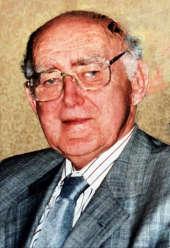
Page 31 | AV News 218 | November 2019
Ladybrand 2019
Jeff Morris LRPS
On the weekend of 13 – 15 September, a record number of 16 delegates thoroughly enjoyed the sixth Ladybrand AV convention. Our convention leaders were John and Judith Hodgson from Adelaide. We thank them for sharing their knowledge and ideas, particularly about story telling in AV. They also showed some wonderful sequences of Australian landscapes. All of us were inspired to try to raise our sequences to new levels and we left with new energy for making AVs.
There was wonderful hospitality as usual from Len and Liesel from the My Housy B&B where the convention was held. The new lecture theatre was the right size for the audience and the sound ambience in the room was excellent.
Almost everyone had brought at least one sequence of their own which was shown and discussed. This is an integral part of every convention. A number of the delegates were �rst-timers showing the �rst or second AV they have ever made. This is a positive sign going forward and we hope to see more of their work at local and international salons.

Page 32 | AV News 218 | November 2019
Thanks a LUT
Mark Allen DPAGB/AV

Your carefully prepared audiovisual is nearly complete. It just requires a little polish, to get everything 'just so'. I often think of my slideshows as a panel of images, or sometimes, as several panels. Often, I want to have a section of the sequence to have a certain feel. This helps with the �ow. In the past, one way to do this was to go through every image by hand and adjust in post-processing. This approach is dif�cult, especially if you have a sequence with 40 to 60 images., but not impossible. There is, however, an easier way. Using a 'LUT' or a Colour Lookup Table.
LUT's allow you to apply Color Grading to your photographs. Filmmakers have been using Colour Lookup Tables (LUT's) for years. (See the screenshot from ‘Traf�c’, below). Professional photographers are now using LUT's to promote a certain style or approach. I believe LUT's can be used successfully in AVs.

The iPhone images that made up my sequence The End Of All Our Exploring were all taken under different light conditions. Outside, inside, natural light, bulb, �uorescent, taken through glass, etc. Initially, I had processed them all very quickly, using Snapseed on my phone.

Page 33 | AV News 218 | November 2019
Thanks a LUT Continued ...
I later decided I wanted to work on every image and eliminate all distractions. Using Snapseed, I reverted them all to their original state and processed them all in ON1 Photo RAW. This software has a 'Perfect Erasure Tool', similar to content-aware �ll. I removed things like modern-day lamposts and anything that was out of place and I found plenty.
I was almost �nished when I noticed that the mono tones changed slightly, from image to image, as the show progressed. It was at that stage that I read an article about Colour Lookup Tables, as they are also called. I searched the Internet for a LUT, looking for something beyond a moody Film Noir, something darker and menacing. Eventually, I found the one I wanted and within ON1 Photo Raw, I applied it to all my images with just one click! The before and after illustrates the subtle change.
I will certainly be using LUTs for my forthcoming sequences, perhaps changing to a different LUT when I change the music. Indeed, I may revisit 'The End Of All Our Exploring' and do just that. For those of you including video footage in your AVs you will be able to match your video to the still digital images, or deliberately un match for dramatic effect.
Page 34 | AV News 218 | November 2019
There are many free LUT packages available that will work with almost all photo editing software. There are also commercial products. A quick search of YouTube will reveal countless articles on how they can be used. I have only scratched the surface, a mere introduction to the subject. I hope I may have whetted your appetite and that ‘LUT’ will feature in your search engine soon. A useful starting point for further research is:
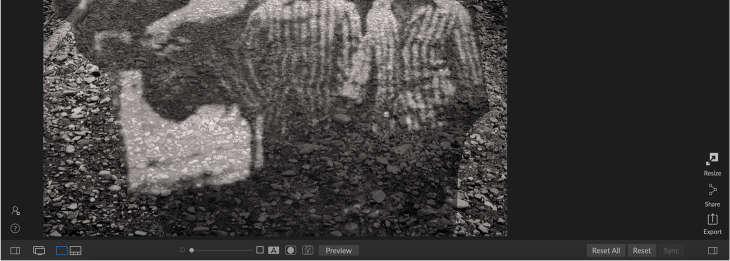

https://www.studiobinder.com/blog/what-is-lut/ Pictured Below The Look Up Table function in the ON1 Photo Raw editing programme

Page 35 | AV News 218 | November 2019
HINTS and Tips 20



Is your Hard Drive full?
 Malcolm Imhoff FRPS FACI(M)
Malcolm Imhoff FRPS FACI(M)

For some time I have been worrying about the ever-decreasing space on the "C" drive of my AV computer. It's a powerful desktop machine which I had built with massive storage, huge memory, top of the range graphics and sound cards, and since it has never been on the internet or had any Windows upgrades it is as fast now as when I bought it many years ago.
One of the innovations I speci�ed was a Solid State drive for the operating system. These were just coming onto the market and were very expensivethe biggest I could afford was 240GB. I had this partitioned and the machine set up to dual boot into either Windows 7, which I use every day, or Windows XP, which I need occasionally for two programmes which will not work with later operating systems.
In Windows 7 the "C" drive has Windows and all my programme �les. This is 107GB. The other partition is called "E" and I use it for what I call my "work in progress": photographs, sound, AV projects, which when complete are moved to another storage drive (or three). This is 116GB. I know that 107 + 116 does not equal 240 but that's Windows for you!
My problem is that over time I have installed new programmes and the free space on the "C" drive was getting less. What to do? I regularly do a "clean-up", delete any temporary �les, and have uninstalled any redundant programmes but the red bar kept creeping up and was now over 106GB, i.e. nearly full [Fig.1 left]. I had a look inside the "C" drive and did a quick calculation of the size of the �les on it. Surprise! I could only account for 35GB. Where was the rest? I couldn't see it.
Now I have a little utility programme called "WinDirStat" [Fig.2 top right]. This is a free and open-source graphical disc usage analyser for Windows, available from several sites such as "https://sourceforge.net" or directly from "https://windirstat.net".. It's very pretty, but is essentially a colour coded map of the whatever drive you specify, with each �le type given a different colour.
Page 36 | AV News 218 | November 2019
I could immediately see that there was an enormous area made up of hundreds and hundreds of picture �les with the extension "JPG.jpg". I opened one of them, followed the �le tree back to its source, and found that they were all in a folder called "C:/Users/User/AppData/Roaming/Adobe/ Bridge CS6/Cache". This, apparently is where Photoshop stores all the information and thumbnails for processed images so that the �les open more quickly subsequently.
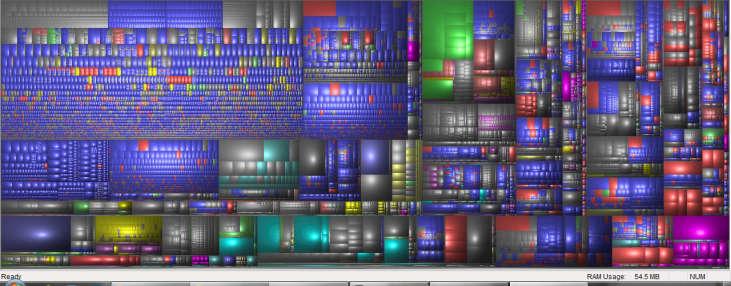
I ran Adobe Bridge, navigated to "Edit ® Preferences ®Cache" , clicked the box called "Purge Cache", and hey presto, I now have 71GB of free space and my "C" drive is only a third used [Fig.3].


I shall be purging my cache and bending my cordwangle quite often in future!
Do you have any requests for Hints and Tips topics? Let us know and we will do our best to answer your questions. We might even tell you what a cordwangle is
Page 37 | AV News 218 | November 2019
Music and the Narrative AV
Peter Young

Iam a professional writer with experience of �lm-making, script writing and editing. Since I started making AVs a couple of years ago, I’ve seen a representative number of other people’s AVs at Festivals and at camera club shows that demonstrate a poor use of music. In this article I’m going to look at different ways of using music to support your narrative in an AV. (Some of these ideas also apply to Photo Harmony.)
It might seem that music is essential part of an AV – but it’s just one of the options for creating a soundscape. (I shall explore non-musical soundtracks in a follow-up article.) Few of us have Judith Kimber’s talent for writing and performing our own music, so we have to rely on live performance or prerecorded music.
Evan Puschak: “ People understand what they see but the feel what they hear. ” For more, Nerdwriter: Harry Potter: What Magic Sounds Like
https://www.youtube.com/watch?v=bJvOqXdsEp8
What music would work best for your AV?
This is a question that only you can answer. What is important is that you avoid the clichés. It’s too easy to grab well-known pieces just because there’s a tenuous connection with your narrative. For example:
• Classic clichés: Handel’s Water Music for any old scene on the river. George Butterworth’s Banks of Green Willow for anything rural.
• Pop song clichés: Up, Up and Away for anything that leaves the ground.
The reason for this is that those pieces of music are part of our cultural heritage, and already have all kinds of memories associated with them. Simply plugging them into Pictures to Exe to �ll up some space between the words is not going to enhance the mood you are trying to create. Think about how tv commercials have changed your response to certain classical themes. You don’t want your audience to be suddenly thinking about cigars ... However, there are times when a quick reference works well. For example, it’s easy to establish a WWII setting by using a clip from the Dad’s Army theme. A few bars are quite suf�cient.
Page 38 | AV News 218 | November 2019
What music should be used for this image?
Establishing a tone

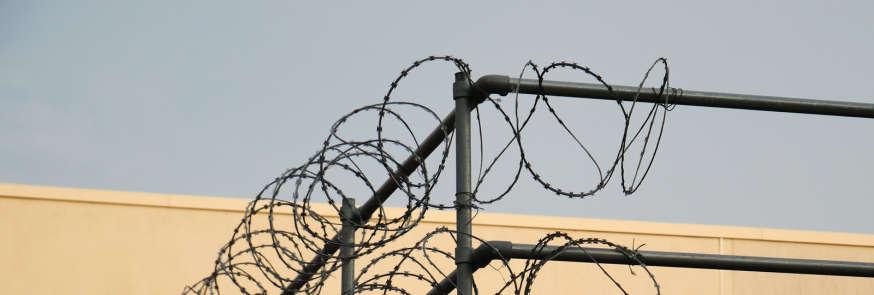
The function of background music is to establish a tone, an emotional feel to the story you are telling in pictures. Think of any Hollywood movie, and notice how your feelings were manipulated throughout by its accompanying music.
People vary considerably in their awareness of background music. Truth be told, if we are engrossed in watching an engrossing movie or AV, we may not be consciously aware of background music. However, in a poorly designed AV, music can become intrusive and even annoying, as we are taken out of the picture content.
For your own AVs, deliberately search for unfamiliar music and curate anything that could come in useful for future use.
Keep it subtle. It’s not about thrusting your taste for Heavy Metal upon an audience. Unless your AV is about music or a musician, lower the volume of your music track so that it remains in the background. In other words, make the music non attention-grabbing. If you set it at a low level, you won’t have the yo-yoing problem of whipping the volume down for the voice-over, and up again when you’ve �nished speaking.
Page 39 | AV News 218 | November 2019
Music and the Narrative AV continued ...
What could possibly go wrong?
In watching other people’s AVs here are some of the things that have struck me as ‘getting it wrong’:
• Using the ‘wrong’ music. For example, if you are making an AV about life in Timbuktu, then you’d better use authentic music from Mali. Using generic ‘African’ music will frustrate some of the audience and take them completely out of the AV.
• Using a piece of music which already has a brilliant music video associated with it. Try as you might, you’re unlikely to do better than Disturbed’s video of The Sound of Silence.
• Similarly, be wary of using music from the soundtrack of major feature �lms, as that may have unwanted associations – and could show a lack of originality.
• Repeating the same snatch of music until the audience gets irritated with it. Ideally, your AV will be transiting a number of different moods during its duration, so that means you need to adjust the music track accordingly.
• The story has priority, not the music. Resist the temptation to make the AV �t the length of the music. This often results in an overextended series of pictures and the audience nodding off.
Creating a music blend
You will often �nd that the most appropriate music for your AV does not come pre-packaged. You want a bit from here and a bit from there. Basically you’re sampling. Then it’s relatively easy to assemble a composite with your editing software - look at my own example on the next page.
Adjust the levels
Once you have put everything together, play the AV through and make sure that you can hear the dialogue voice-over clearly against the background sound effects and music. Sometimes you need to shift the voice-over track just a fraction to avoid a sudden fortissimo in the music. Otherwise, just take the background volume down for that moment.
As in many other �elds of human endeavour, Less is More. Editing by cutting things out is a good thing! There is no law that says your AV has to be 7 minutes long. If you can say it in one minute, then do it. And I ’ ll look forward to watching it.
Page 40 | AV News 218 | November 2019
In my recent AV, The Lost City of Droitwich (a spoof documentary about a deserted town) I used part of “Asma Asmaton” by Vangelis [you can hear this on https://www.youtube.com/watch?v=_5oCn2BCsdk ] This music sets the scene with a slow, mysterious steady beat. I just wanted the intro and the ending but not the singing which constitutes most of the middle. So I extracted the beginning up until the voice started, and the ending after the voice �nished. It was easy to line up the two tracks one below the other visually (see Figure 1 below ) and then apply a slow cross-fade. As the overall volume is quite low, the voice-over makes the ‘join’ invisible.



Page 41 | AV News 218 | November 2019
Sound for AV



Visualising the Music
Malcolm Imhoff FRPS FACI(M)
In the last two articles we have dealt with shortening and lengthening a piece of music. Most AV soundtracks are a little more complicated than that, so in future articles we'll have a look at how to mix several pieces of music, and with mixing music and voice.

Whatever you want to do however, I �nd it is helpful to be able to visualise the particular music track(s) you have chosen. My problem is that I don't read music. Those who do have a ready-made advantage as they probably already have a score that they can see, analyse and annotate.
When I �rst started in the days of reel-to-reel tape, then cassettes, and eventually a hard disc recorder (yes, I was into digital sound many years before I made the transition (ha ha!) into digital AV), I would draw my music on graph paper. I ruled out a grid with intervals at every 2 and 10 seconds, and while playing the music I would draw a line to represent how I "saw" the music, its �ow, rhythm, volume, any sudden drum beats or trumpet blasts, climaxes etc. I would then decide where I wanted to start and end my sequence, and roughly allocate slides to points on this graph.
Fig.1 (right top) is a blank sheet, and Fig.2 (right below) is an early handwritten example from my Matterhorn People AV. I'm not sure how well it will reproduce in print.
I still sometimes use this technique, especially for a Photo Harmony production, but realised some time ago that there is an easier way. Simply take a Screen Shot of the waveform in Audition or Audacity and annotate that. The �gures overleaf show how I used the print-outs of the waveforms to identify and select the parts of four music tracks for my Grand Circle AV.
Of course you end up listening to your music quite a few times, but doing this does make you know it inside out, and really helps you to make the slides and transitions harmonise with the music, the start, end, its rhythm and phrasing.
Page 42 | AV News 218 | November 2019


Page 43 | AV News 218 | November 2019
Music for AV - Visualising the Music continued ...
Page 44 | AV News 218 | November 2019
Page 45 | AV News 218 | November 2019
Photoshop – Advanced Image Rescue
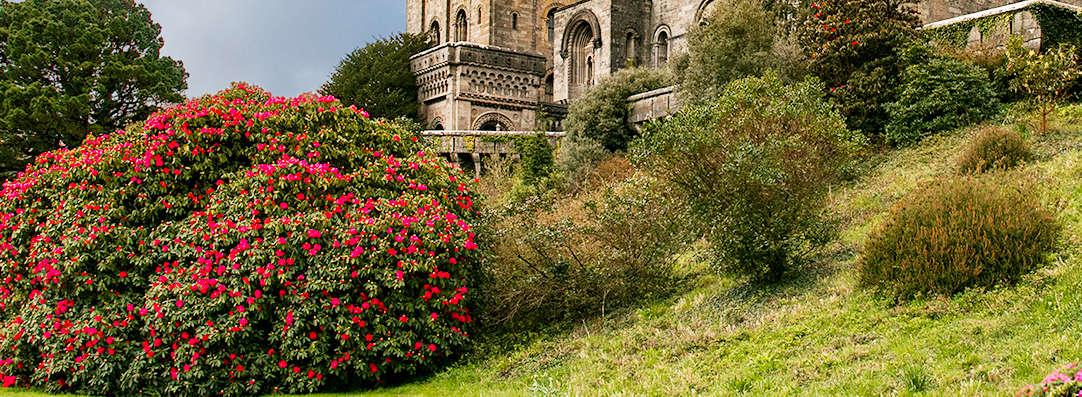
 Keith Scott FRPS DPAGB AV-AFIAP
Keith Scott FRPS DPAGB AV-AFIAP
In this article I shall outline eight simple stages taken to get from the raw snapshot (top right) to this rescued image below.
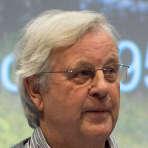
This is a follow-uo to the article in November 2018 edition of AV News, re the last cold war Vulcan Bomber XH558 designated `The Pride of Great Britain’. I received a speci�c request from a reader asking me to write a somewhat more advanced recovery article, to comprise masking �ne detail and elements from other images (compositing).
Looking through my catalogue I found an image ideally suited to this requirement. Taken at Penrhyn Castle in Wales during April 2012 under appalling weather and lighting conditions. The original image (above) was shot as a Nikon raw �le (NEF). I always shoot in raw format to retain full image data ensuring nothing is lost by .jpg lossy compression.

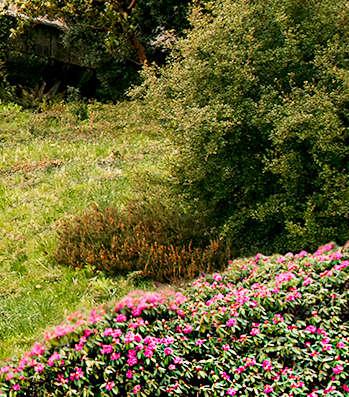
By studying the original image its obvious that it contains many faults. It’s dull, void of contrast, detail, or colour. It’s an un�attering sky, objectionable converging verticals of the castle structure, and needs cropping to 16:9 wide screen format. Also the composition needs framing with something at the top left and bottom right corners.
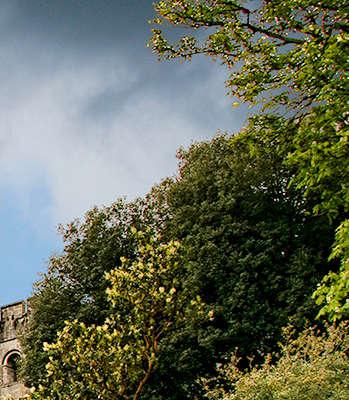
Page 47 | AV News 218 | November 2019
Photoshop - Advanced Image Rescue continued ...
Stage 1. Upon opening the original �le, a copy layer is made for editing (Ctrl+J); I never edit the original layer. Two vertical guidelines are dragged from the left ruler and placed at each end of the castle to aid alignment. To access the `Transform’ function tap Ctrl+T, then right click to select `Perspective’. The perspective is dragged a little outward at the top and inwards at the bottom corners to correct the converging verticals i.e. bring the castle structure parallel to the two guidelines. To hide or restore the guidelines at any time tap Ctrl+H.
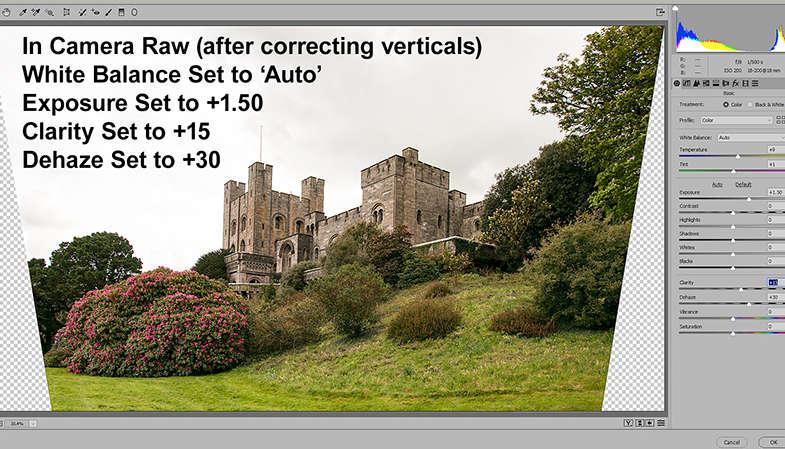
Stage 2 . To recover brightness, colour and detail the image is opened into `Camera Raw’ (Ctrl+Shift+A). Settings in Camera Raw will depend on each individual image, however the settings used for this image were: White Balance to Auto, Exposure to +1.50, Clarity to +15, and Dehaze to +30. At this stage we only need to get something quite close to the colour and brightness required as these may be �ne-tuned later using adjustment layers.
Note; if your RAW �le opens by default directly into Camera Raw then simply carry out the brightness and colour corrections �rst, then correct the perspective afterwards. It doesn’t matter in which order stage 1 or 2 is undertaken, but make sure you retain an unedited �le for safety.
Stage 3 . Here we address the making of a mask to block out an un�attering sky. This mask will contain lots of tiny detail areas in and around the leaves and branches of trees and bushes, also around the �ag pole and two barely visible lightning conductors on the castle roof.
Page 48 | AV News 218 | November 2019
There are lots of ways to make the necessary selection to create a mask but in this instance a `Channel’ copy is used. Click on the Channels Tab, then click on each in turn of the Red, Green, and Blue Channels, choose the channel with the most contrast. In this case it’s the Blue Channel. Right click on the Blue Channel thumbnail then select `Duplicate Channel’. Select the Blue Copy Channel then from the main menu select `Image’, `Adjustments’, `Levels’, short cut keys Ctrl+L. Select the small black triangle at the left side under the `Levels’ histogram, drag this to the right to blacken most of the foreground, drag the small white triangle to the left to whiten the sky. The intention is to get as much of the foreground as pure black and the sky as pure white as possible. If you’ve not done this before you may need to make several trial and error adjustments of both black and white until the best compromise is found. It’s easier to do than it sounds.
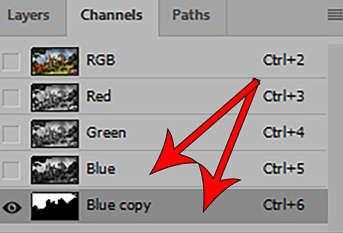
Any areas of the foreground showing detail may be painted over using Black with the Brush tool. To use the default black or white on the mask tap on the `D’ key. To alternate between black or white tap on the `X’ key. Once satis�ed that the foreground is black change the blending mode of the brush tool from `Normal’ to `Overlay’. The brush tool will now only paint black over areas intended to be black and white over areas intended to be white. Brush white across the sky area, especially over trees, bushes, and other areas containing very �ne detail.

Page 49 | AV News 218 | November 2019
Photoshop - Advanced Image Rescue continued ...

When satis�ed press Ctrl on the keyboard and left click on the thumbnail, this will then select all the white areas. At this point the selection is opposite to what’s required, press Ctrl+Shift+I to inverse the selection. Next click on the RGB Channel to display the image in full colour, then click on the Layers Tab. Click the Mask icon at the bottom of the Layers palette to create a mask that displays the foreground but hides the sky.
To avoid colour fringing around very �ne detail (leaves and twigs) we can re�ne this mask further. Ensure the Mask thumbnail is selected and not the image thumbnail. From the main menu click on `Select’ then on `Select and Mask’ or use shortcut Alt+Ctrl+R. At the right side of the `Select and Mask’ properties control panel set `Feather’ to 0.7px, then lower down place a tick in the little box entitled `Decontaminate Colors’, then choose to output to `New Layer with Layer Mask’ and click OK.
You will now have an additional layer with new mask above your previous layer. You don’t need both, the original layer with mask can be deleted, retain the new layer with re�ned mask just created. There are other tricks to re�ne masks and to prevent colour fringing, but we’ll leave those for another article. All the above may sound rather complex but it takes longer to write about than to achieve. When you’ve done this a couple of times, you’ll realise how simple it is to accomplish. Master this masking technique because it’s needed again for later stages when we introduce the top left and bottom right corner foliage frames.
Stage 4. To replace the un�attering sky a new sky background was chosen from my large catalogue of stock images. This sky image was opened into Photoshop then dragged into the working image below the masked layer. In its original form the sky was too dark, it was lightened using a `Curves Adjustment Layer’, but a `Levels Adjustment Layer’ would also have worked.
Page 50 | AV News 218 | November 2019
Stage 5. This repeats stage 3 but now using elements from other images. In this instance it was a case of adding two images that contained suitable trees and bushes taken in similar lighting conditions, and time of year, to be used for the corner foliage frames. The image (right) taken at the abandoned Tynham village in Dorset was used for the top left corner by masking out its main church and headstones leaving just `some’ of the overhanging tree branches and leaves. The resulting �ne detail mask allowed the sky to show through between leaves without colour fringing. In its original form the leaves were too dark, they were lightened using a clipped `Hue and Saturation Adjustment Layer’ also to adjust the green colour values of the leaves to achieve more pleasing visual result.
By `clipping’ adjustment layers to an image layer their functions only effect the layer to which they are clipped, leaving layers below unaffected. The foliage at the lower right corner was achieved in the same way, this image originated from Penrhyn Castle garden and was probably taken within minutes of the rescued image. It was �ipped horizontal and rotated slightly anticlockwise to achieve the required positioning.

Stage 6. Select around the left bottom bush, feather the selection by a few pixels to prevent hard edges. Press Ctrl+J to copy to a new layer. Apply a clipped `Hue and Saturation Adjustment Layer’ then increase the saturation of the red blooms to intensify their colour. A similar process was also applied to the bottom right corner bush.

Stage 7. To apply controlled sharpening of the castle. Select the castle building, feather the selection by a few pixels to prevent hard edges. Press Ctrl+J to copy to a new layer. From the main menu select Filter, Other, then High Pass. Set a `Pixel Radius’ of 3 to 5 pixels and click O.K. You will now have a grey looking copy of the castle. Change the blending mode of this grey layer to `Overlay’. You may adjust the level of sharpening by altering the `Opacity’ of this layer. Don’t over sharpen, 40% - 60% is usually enough.
Stage 8. Save the work as a .psd �le to allow future editing. Then the �le can be �attened and cropped to the required size. I use a pre-set on the crop tool of 1920 x 1080 pixels for our current wide screen standard. The �le can now be named and saved as a .jpg format for use in an AV Sequence. This rescued image may not be a masterpiece, but it does provide a useable image from an otherwise unusable original.
Page 51 | AV News 218 | November 2019
November/December 2019
17 November
RPS Yorkshire AV Day
Speaker: Alastair Taylor ARPS, CPAGB
Leeds Trinity University
Contact: bryan@stubbsav.com
29 November to 1 December
Great Northern AV Festival
Hough End Centre, Mauldeth Road
West, Chorlton, Manchester
Contact: info@gnfestival.org.uk
Winter/Spring 2020
25 January
MPGB Midphot AV Competition
Burton on Trent Contact: alast.taylor@gmail.com
8th February
L&CPU Annul AV Competition Wilmslow Guild
7 and 8 March
IAC Peter Coles International AVC
Venue: Capel Curig
Contact: nwawavg@chasingthelight.co.uk
March 2020 and Beyond
21 March
East Anglian AV Competition
Margaretting Village Hall, Ingatestone, Essex
Contact: dickwilliamsav@yahoo.co.uk
21 March
3rd N&EMPF Audio Visual Competition
Newark Show Ground
Newark, Nottinghamshire
Contact: david.gibbins@ntlworld.com
25 and 26 April
Smethwick National AV Competition
Venue: The Old School House, Churchbridge, Oldbury, B69 2AS
Contact: raydowding@btinternet.com
26 and 27 September
2020 RPS International AV Festival Centenary Hall, Dean Close Preparatory School, Lansdown Road, Cheltenham, Gloucestershire, GL51 6QS.
Contact: Edgar Gibbs
(A formal announcement will be made when the booking with the school has been con�rmed)
Page 52 | AV News 218 | November 2019 FUTURE
Visit http://www.avlinks.org.uk/ for a full list of events
EVENTS
Chairman Edgar Gibbs edgar.gibbs@ntlworld.com 02920 564850 Vice Chairman Alastair
alast.taylor@gmail.com 01952550398 Secretary Alan Tyrer abtyrer@gmail.com 01472 504882 Treasurer Keith Watson k.n.watson@virginmedia.com Andrew Gagg gagg@gaggf2s.com 01905 748515 Martin Addison mail@martinanddoreen.plus.com Peter Warner peter@peterwarner.co.uk 07811 953480 Howard Bagshaw howard.bagshaw@ntlworld.com 01889 881503
The RPS AV Group Committee
Taylor
Publication Information
AV News is published quarterly by the AV Group of the Royal Photographic Society. It is distributed free to Group members and is available to others for an Annual Subscription of £22 in the UK, £25 in Europe and £27 elsewhere – contact Keith Watson at k.n.watson@virginmedia.com
Copy Deadlines
27th September
27th December
27th March
Publication Dates
1st November
1st February
1st May
27th June 1st August
Please note that the copy deadlines are the absolute latest. To ensure publication in the next issue please send copy as early as possible.
Any items concerning Audio Visual and Multimedia are welcome, including reviews, technical details, events, photographs, letters and queries. All contributions should be submitted to the Editors at: magazine@avnews.org.uk

The views expressed are solely those of the contributor and not necessarily those of either the Editors or the RPS AV Group.
Distribution: AV News is forwarded to RPS AV Group members using the labels produced by the RPS Membership Department in Bath. Any member not receiving their copy should contact Bath. However, the Secretary will be pleased to post single copies to those members who have failed to receive them.
Copyright: All rights reserved. No part of this publication may be reproduced, stored in a retrieval system or transmitted in any form or by any means without prior permission of the copyright holder.
Printed By Mensa Printers, Arundel Lane, Shef eld. S1 4RF
JOIN ONLINE www.rps.org OR CALL 01225 325733 Standard £120 Family £180 Overseas (under 65s) £108 65 and Over £90 25 and Under £55 Student £55 Disabled £55 Life (from) £950
Subscriptions
Annual
Wedition, particularly with various reports and images from the excellent mood of the AV (and he should know as the 2019 NAVC champion). I would







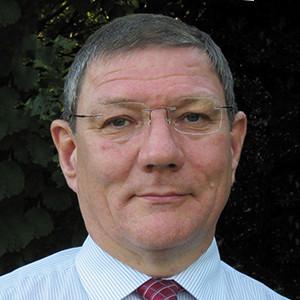
There was some helpful discussion about AV News at the RPS AV Group competition (which took place on the same day). I hope you view this as an possible. Another suggestion has been to distribute the journal via electronic being to move to three editions per year with more pages per edition. In consist of only letters to the editor ...











 Allen, Jill Bunting, John Smith, Jenny Baker, Christine Chittock.
Allen, Jill Bunting, John Smith, Jenny Baker, Christine Chittock.























 Keith Leedham FRPS EFIAP FIPF
Keith Leedham FRPS EFIAP FIPF






































 Tryfan Skylight by Marion Waine and John Rowell
Winter ‘s Gift by Martin Fry
Safe by Judith Kimber
Tryfan Skylight by Marion Waine and John Rowell
Winter ‘s Gift by Martin Fry
Safe by Judith Kimber














 Ian Bateman FRPS MPAGB AV-AFIAP APAGB President, Western Counties Photographic Federation
Ian Bateman FRPS MPAGB AV-AFIAP APAGB President, Western Counties Photographic Federation











 Malcolm Imhoff FRPS FACI(M)
Malcolm Imhoff FRPS FACI(M)

















 Keith Scott FRPS DPAGB AV-AFIAP
Keith Scott FRPS DPAGB AV-AFIAP




















